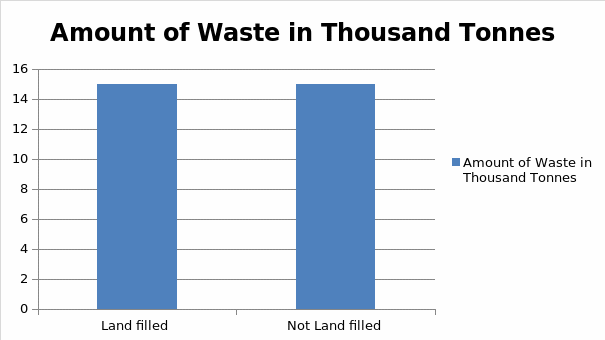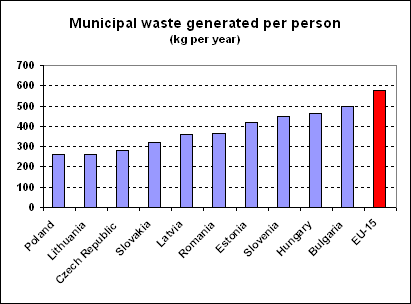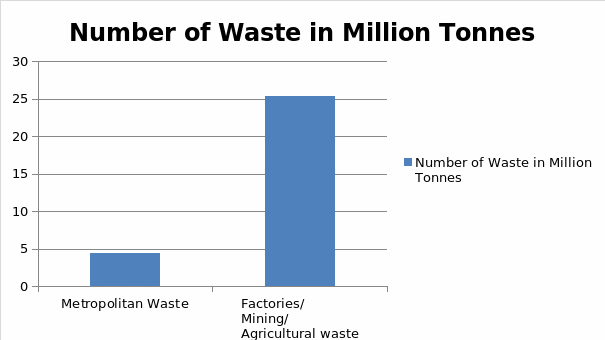In 2005, the authorities of Czech began to notice considerable amounts of metropolitan waste for the first time. The waste was being transported unlawfully from Germany into the Czech Republic. Even though the situation is restricted on two nations, it fits in a chronological pattern of unlawful inter-national German waste shipment. The situation of illegal toxic waste dumping in Czech has raised questions on a global basis about the implementation of a broader policy that regulates the transportation of waste in Europe. This paper seeks to place the situation of unlawful transportation and dumping of metropolitan waste from Germany into the Czech Republic in a sociological point of view. The environmental sociological ToP- (Treadmill of Production) – theory has been introduced in the paper to offer a framework for analysis. The paper evidently gives the recent occurrences of unlawful shipment and dumping of waste. The paper ends with a significant analysis of the applicability of the sociological ToP point of view to the issue.
In the late 2005 and in the early months of 2006, the authorities of Czech noticed that considerable amounts of metropolitan waste were being dumped in Bohemia from Germany. The unlawful shipments continued to be interrupted by police force and the societal officials all the way through 2007. The poisonous waste was noticed primarily through the interruption and inspection of all the trucks that were heading to black dump locations. In mid 2006, the CEI – (Czech Environmental Inspectorate) – attested that a lot of the waste emerged from the German federal states (Royte, p. 30).
Black deposits were discovered in different places within the Czech Republic. However, North Bohemia close to the German border was ascertained to be the place that carried most of the black dumps. Unlawful deposits amounting to twenty six in total were documented by the press as containing waste that turned out to have been instigated in Germany. Most of the places where the waste was dumped unlawfully were in open fields and heaps, constructions in farms, evacuated military air-fields, and warehouses as well as in lawful landfills.
The CEI discovered a total amount of thirty thousand tones of unlawful German waste supposed to be deposited in Bohemia. From the total number of waste, a total of fifteen thousand tones was eventually land filled within the Czech Republic. See the graph below. This was in the summer season of 2006. However, in 2006, a total of seven thousand tones of the waste were attested to have been instigated in German.


In January 2006, the authorities of Czech noticed a site that was attested to be the most notorious dumpsite, in close proximity to the village of Libčeves in North Bohemia. The Czech inspectors discovered a total of approximately four hundred thousand tones of metropolitan waste from the state of Germany. This was corresponding to a total of two hundred truck-loads that was situated in a totally vacated place. Some of the dumped materials were very dangerous. In addition to this, the waste were not properly stored leading to the attraction of pests and disease. The waste posed a threat to the contamination of the soil and water (Andersson, p. 27)
In fact, the waste was set on fire in three diverse instances. As a result, a lot of smoke was released into the whole environment thus affecting the whole life. Majority of the people assume that the waste was intentionally set on fire to shun away from the verification of the offense. Although it was confirmed that the waste in Libčeves were transported from Saxony-Anhalt, it was impossible to establish the person who was accountable for burning the waste. Even after a contract between the two states for the waste to be returned; only seven hundred and fifty tones of the waste were taken to Germany. However, the remaining waste was land filled in Czech (McCormick, p. 45).
Subsequently, a hauler of waste in the Czech Republic was fined by its authorities a total of 10,000,000 Czech crowns. The authorities claimed to have fined him because of creating a dumpsite. The Czech Republic hauler in response shunned away from paying the penalty by proclaiming bankruptcy. The authorities of the Czech Republic used different approaches in responding to the dumpsites that were discovered in Bohemia. The authorities of the Republican of Czech even went ahead to create different regulatory reforms, collaboration along with altercation with their Germany colleagues. Initially, the government of the Czech Republic thought of prohibiting all importation of waste products.
A policy that outlined the kind of waste to be imported was developed. The rule was supposed to be carried out in March 2006 but this did not happen. The policy was instantly discarded due to the fact that it was impractical. In addition to this, the policy was evaded because it contradicted with the regulations of the European Union waste shipment. The policy also impeded the justifiable waste trade across the border that was very significant to the Czech Republic industry of recycling. Inspection around the border was carried on a regular basis to get the individuals who defy the policy. Individuals who violate the policy were to be fined for unlawful waste imports. The fines to be imposed on individuals who violate the policy as standardized by the government of Czech were to range from a total of 10,000,000 to 50,000,000 Czech crowns (Klíma, p. 9).
After the formation of the policy, numerous organizations were fined. At the same time, a lot of suspects were arrested by the Czech authorities. In April 2006, a total of five citizens of Czech and one citizen of German had been detained after participating in the transportation and dumping of unlawful waste. Regarding organizations, a total of four firms from Czech had been fined a sum of money ranging between a quarter of a million and ten million Czech crowns for taking part in smuggling of waste.
Around June 2006, the Czech Environmental Inspectorate publicized strategies to seek a tribunal of 20 organizations from Germany. Bullard asserts in his book that a “special German-Czech environmental commission was created during the crisis and a Roadmap for the disposal or recovery of illegally shipped German waste to the Czech Republic’ was signed by the environment ministries of both nations in early May 2006”. In spite of the contract between the two nations, the citizens of the Czech Republic thought that the authorities of Germany were not determined to collaborate in solving the offense and taking their obligation of removing the waste. As a result, strict policies were advocated internationally by the Czech Republic to regulate waste trade.
Generally, the themes of waste transportation and management of waste between two or more countries has not been a major focus for most of the researchers in the field of social science. However, the management of waste is usually regarded as a very a “technical issue to be handled by engineers, as an administrative issue to be handled by regulators, and as a political-legal topic to be handled by either policy-makers or other law enforcement bodies” (Girdner 18). The performance of a social science investigation is usually aimed at the nature of the contemporary industrial culture. The current culture entails an assessment of the pathways towards the manufacture and the utilization of the merchandises. This is usually done without acknowledging the verity that every one of the social and economically related activities involves discharge of waste that need to be disposed (Cowan and Century, p. 32).
Most of the processes resulting from production and consumption of the produced goods lead to a discharge of toxic waste. In fact, organizations in form of industrial units produce merchandises, noxious waste along with other scrap materials. Almost, all products which people consume starting with foodstuffs, garments, vehicles and even cellular phones end in either a pitfall, land fill or be disposed off. Most people do not think where the substances and materials that have been thrown in the rubbish-bins go. According to the book of Gould and Tammy, it is attested that “No matter what, waste never vanishes. It can, at most, change its form. Rubbish is immortal, it pervades the air, swells up in water, dissolves, rots, disintegrates, changes into gas, into smoke, into soot, it travels across the world and gradually engulfs it” (Gould and Tammy, p. 23).
The persistent discharge of waste materials into the environment raise alarms from the public leading to societal problems. Most researchers from the state of Europe have discovered the relevance of managing waste materials on an environmental and sociological point of view. Stauber denotes in his book that of the researchers from Europe said that “the production of waste is closely tied to other issues, including consumption patterns, lifestyle, jobs, and income levels, as well as a host of other socio-economic and cultural factors” (Stauber, p. 12). This statement brings out the relevance of examining the management of waste materials within the broader field of socioeconomic development and management of resources. In fact the management of waste is acknowledged as a major area of concern in the protection of the environment. This is because, waste act as a boundary between the out-put of manufacturing, shipment, and consumption and the ecosystem.
The theory of Treadmill of Production is a significant political-economic approach to comprehending correlations, particularly the causes, impacts, and possible resolutions of environmental issues. The point of view of treadmill proposes that unlawful transportation of waste is a systematic issue. Due to the fact that there is a steady economic growth in different nations, the level of waste material is also inclined to increase. With the current situation of a globalized economy, the exportation of waste material in countries that lack borders is highly predictable. The laws and principles that were meant for promotion of sustainability development may possibly be besieged by the highly competitive economic interests.
According to ToP, it is asserted that “capital-intensive economic expansion is intrinsic to capitalist-market societies, due to the structure of the economy and the role of the state, and involves an intrinsic tendency toward environmental degradation” (Gunter and Kroll-Smith). The theory of Treadmill of production acts as a symbol for the performance of the contemporary factory industrialist political economy. One acknowledgeable aspect of an economy is that it has a steady expansion, driven by profit maximization and by personal interests. Therefore, an economic system is usually associated with social and environmental outcome. Similarly significant is the use of authority and influence of the political methods towards intensification for benefiting the economic and political leaders. The interests of big systems of governance and big businesses are usually associated with enhancing economic development at nearly all costs. This is illustrated in the graph.

During the investigation of the ToP hypothesis, research attested that the “corporate involvement in waste management and recycling systems can contribute to social and ecological problems by undermining local government authority and creating hazardous work conditions” (Harper 12). The ToP hypothesis concentrates on the manufacturing part of the economy since this is the substantial location of the initial interface between the society and the environment. Consumption is the next one after manufacturing. Even though consumption has direct impacts to the environment, it is not directly linked to the environment as it is with production. A good example is in the US where domestic garbage amounts to about 2% of all waste globally. This includes kitchen metal scraps, fabrics and gears, backyard trimmings, wrapping papers, electronic gadgets, mineral waste, and other affluent. In Czech, out of 29.8 million tones, 15% was metropolitan waste while the rest was from factories, mineral extraction, and agricultural waste. See the figure below.

Theorists have attested the existence of an uneven authoritative dynamic between manufacturers and consumers. “Not only do individuals have little choice but to buy what is produced, but producers use advertising and influence the mass-media to shape consumer preferences and increase demand” (Schnaiberg and Gould 16). This perspective helps in the completion of the treadmill hypothesis of the progressive increase in the economical activities and the increase in the levels of producing waste.
For the environment to be protected, the manufacturers should be political. For an efficient counterbalance, consumers should participate in social movements to force the authorities of the personal and public sectors into action. An affirmative change can only be attained through clashes with political and economic leaders. Therefore, regarding the waste management policy, there is no need for relying on environmental edification. Most people regard globalization as a solution to most of the environmental problems. In fact most issues result from an economy that is globalized.
Even though Czech has economically achieved a lot of advantages from globalization, the unlawful shipment of waste in Czech has also been as a result of globalization. Similar to the ToP hypothesis, as new stern rules are carried out and the costs of waste treatment shoots in Germany, it is normal for Germans to look for less costly disposal substitutes. Therefore the current policies meant to regulate the issue of unlawful waste dumping in Bohemia have demerits and merits (Schnaiberg 22).
Conclusively, international waste shipment laws and regulations have highly contributed to the situation of unlawful waste dumping. This is because of allowing unlawful trading of waste products along with other weaknesses within the sector that have never been solved. Therefore, chances for the occurrence of similar activities are very high. Even as the unlawful toxic waste deposits that resulted into Bohemian black dumps are an artifact of economic incentive, the incentives were enhanced by the international policies.
Works Cited
- Andersson, Magnus. Change and Continuity in Poland’s Environmental Policy. Dordrecht, Netherlands: Kluwer Academic Publishers, 1999. Print.
- Bullard, Robert. The Quest for Environmental Justice: Human Rights and the Politics of Pollution. San Francisco: Sierra Club Books, 2005. Print.
- Cowan, Rick and Douglas Century. Takedown: The Fall of the Last Mafia Empire. New York: Berkley Books, 2003. Print.
- Girdner, Eddie. Killing Me Softly: Toxic Waste, Corporate Profit, and the Struggle for Environmental Justice. New York: Monthly Review Press, 2002. Print.
- Gould, Kenneth and Tammy Lewis. Twenty Lessons in Environmental Sociology. Oxford: Oxford University Press, 2008. Print.
- Gunter, Valerie, and Steve Kroll-Smith. Volatile Places: A Sociology of Communities and Environmental Controversies. Thousand Oaks: Sage Publications, Inc., 2006. Print.
- Harper, Charles. Environment and Society New Jersey: Prentice Hall, 2007. Print. Klíma, Ivan. Love and Garbage. London: Vintage, 1990. Print.
- McCormick, John. Environmental Policy in the European Union. New York: Palgrave, 2001. Print
- Royte, Elizabeth. Garbage land: On the Secret Trail of Trash. New York: Little, Brown & Co., 2005. Print.
- Schnaiberg, Allan. The Environment: From Surplus to Scarcity. New York: Oxford University Press, 1980. Print.
- Schnaiberg, Allan, and Kenneth Gould. Environment and Society: The Enduring Conflict. New York: St. Martin’s Press, 1994. Print.
- Stauber, John. Toxic Sludge is Good For You: Lies, Damn Lies and the Public Relations Industry. Monroe: Common Courage Press, 2002. Print.